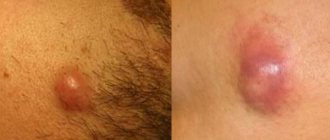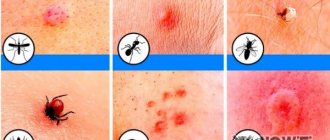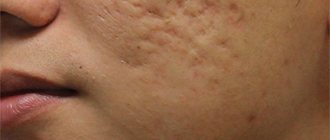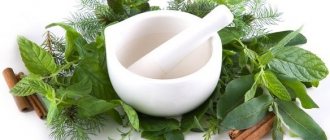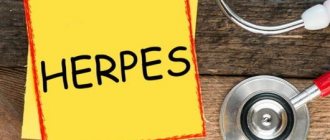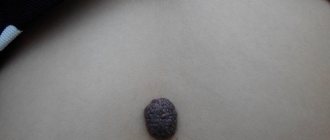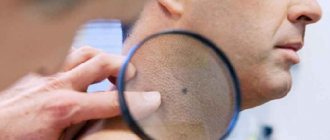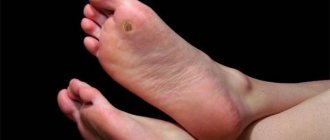Do you like to often be in nature, in the country? Find out which types of insect bites are especially dangerous. If you detect a bite in time, this will reduce the risk of negative consequences.
While most bites may only cause an itch, others can be extremely dangerous and cause a huge number of health problems if the bite is not immediately attended to. Here is a list of insects you should be wary of.
Bitten by a mosquito, redness and blisters as if from a burn
The medical portal 03online.com provides medical consultations via correspondence with doctors on the website. Here you get answers from real practitioners in your field. Currently, on the website you can get advice in 45 areas: allergist, venereologist, gastroenterologist, hematologist, geneticist, gynecologist, homeopath, dermatologist, pediatric gynecologist, pediatric neurologist, pediatric surgeon, pediatric endocrinologist, nutritionist, immunologist, infectious disease specialist, cardiologist, cosmetologist, speech therapist, ENT specialist, mammologist, medical lawyer, narcologist, neurologist, neurosurgeon, nephrologist, oncologist, oncourologist, orthopedist-traumatologist, ophthalmologist, pediatrician, plastic surgeon, proctologist, psychiatrist, psychologist, pulmonologist, rheumatologist, sexologist-andrologist, dentist, urologist, pharmacist, herbalist, phlebologist, surgeon, endocrinologist.
We answer 95.52% of questions.
Stay with us and be healthy!
Prevention of insect bites in children
Be careful when near nests or hives containing invasive insects.
By spending time outdoors, you can take preventative measures:
- Wear a hat and clothing that covers as much of your body as possible.
- Wear clothes in neutral colors and without patterns.
- Avoid scented lotions or perfumes.
- Keep food and drinks indoors in sealed containers.
- Use citronella candles.
Reference healthline.com/health/bug-bites
On the Vikids platform you can:
Blisters on the skin: signs, treatment, types, characteristics
Skin rashes in the form of blisters may be an indicator of the body's reaction to some unacceptable influence, which goes away after the unwanted agent is eliminated. In another case, blisters may be a symptom of a serious illness. You should be careful about such phenomena.
A blister is a fluid-filled formation. Filling the blister can be:
Education manifests itself as painful sensations. They come in a variety of sizes: from very small to quite large - the size of a palm.
A blister is also defined as an elevation above the surface of the skin, which is characterized by clear boundaries, and its nature is swelling of the skin. Such formations tend to appear quickly as a result of a certain exposure, and the blisters also quickly disappear on their own when the exposure stops.
Characteristic bulges appear on the skin surface as a result of swelling, inflammatory nature, of the papillae of the upper layer of the dermis. Blisters cause an itchy feeling on the skin.
Some experts believe that only formations that fit the latter description can be considered blisters. But those bulges that arise from burns, abrasions and are bubbles with liquid inside have different names. Nevertheless, most experts combine all these phenomena with one definition - blisters.
- Skin rashes, the components of which are defined as blisters, are white or pinkish in color. There is often a pinkish or red rim along the edges of the formation.
- The shape of the blisters can be irregular or round, depending on the cause of their origin. The formations feel like dense bulges.
Next, we consider red, white blisters with fluid on the skin of the legs, arms, and other parts of the body in a child and an adult.
Elena Malysheva in this video will talk about blisters and corns:
Classification
Blisters appear as a result of various influences on the body by external and internal factors. The reasons that caused the formation of blisters on the skin or mucous membranes determine the classification of this phenomenon.
- symptomatic is when their appearance is one of the symptoms of a certain disease:
- allergic - this phenomenon, in turn, is initiated by:
- medications, if any component in their composition causes side effects;
- food products that contain a substance perceived by the body as an allergen;
- costume jewelry and low-quality or expired cosmetics,
- household chemicals or substances with which people come into contact at work;
- the body's reaction to insect bites,
- contact with certain plants;
- as a result of mechanical or physical impact:
- burns caused by different methods:
- the appearance of blisters when the skin is rubbed:
- from the tools on the palms of the hands,
- on the body from rough clothes,
- on the feet from uncomfortable shoes.
- itching,
- burning,
- discomfort,
- there may be a painful feeling.
Blisters on the skin (photo)
Self-diagnosis
Blisters are easily identified when they appear, because their presence is usually accompanied by the following sensations:
the presence of blisters can be established on the skin if the formations that appear correspond to the description given above:
- by configuration – irregular or round outlines,
- density - are dense formations,
- color – pale color, maybe red;
- shape - convexity above the surface,
- size - they come in different sizes; it happens that small blisters merge into one.
Read below about the reasons for the appearance of large and small watery blisters on the skin.
Possible pathologies
Blisters are a signal that a person may have one of the following problems:
- Mycosis is a disease associated with a fungal infection; pink blisters are accompanied by itching and begin to peel off over time.
- Insect bites - substances that get under the skin during a bite very quickly provoke swelling in the form of a blister and redness. A bite may carry the potential for side problems from insects:
- hornets,
- mosquitoes,
- ticks,
- flies,
- bumblebees,
- gadflies,
- ticks,
- bedbugs,
- bees,
- midges
We will tell you below what to do if your skin itches and blisters, allergies, itching, redness, rashes and other associated symptoms appear.
Methods to combat this symptom
The integrity of the blisters must not be damaged. It is necessary to ensure that their surface is not subject to injury. This is so that the blister does not accidentally become infected if its surface loses its integrity. Avoid scratching the rash.
After determining the cause of the blisters, the doctor prescribes treatment measures, this may be:
- for allergies - eliminating the allergic agent from your environment, taking antihistamines, sorbents, carrying out specific immunotherapy;
- if affected by herpes - care for the rashes, lubricating them with brilliant green;
- when diagnosing diseases, treatment of the main cause that caused the rash.
The video below will tell you about blisters on your toes:
Rate this article: (1 ratings, average: 5.00 out of 5)
Category: First aid
Similar articles:
What to do and how to treat a burn with boiling water with blisters at home (ointments, folk remedies)
Treating burns with blisters at home
Burn in a child with blisters
First aid for burns. How to treat burns with blisters if the blister has burst
Bite and a blister or blister at the site of the bite. What to do?
This is the third case after the bite, I don’t know who. At the site of the bite, of course, after active scratching, a blister appears. The first two were not big. About 5 mm, no more. They passed without consequences - they burst, I treated them with an antiseptic so that I wouldn’t touch them again and could still seal them with a band-aid. But this one shocked me. Showed up on Saturday morning. Today, after 3 days it burst.
In principle, nothing bothers the child. It worries me, as soon as I see him, I start to get jitters.
2. Why such a reaction? Will the next one be even bigger?
I constantly tell her that if it itches, tell me, we’ll apply something cold, apply hydrocortisone ointment or fenistil. But apparently she forgets. And I don’t understand where you can catch a mosquito bite or something else. There are screens on the windows of the house, we turn on the anti-bite switch every night. Of all the people, she is the only one who feels bitten and this is the first time she has had such a reaction.
Tell me what to do?
Right foot - there is one
Left foot (in the same place where the big bubble was) - there are two things there:
Now, 2 weeks later, what’s left of the big bubble:
Why do blisters appear like mosquito bites on the body, what are they and how to get rid of them?
The appearance of blisters on the body, similar to mosquito bites, can be caused by both internal and external factors.
The accumulation of blisters on the body or in certain areas of it is a prerequisite for immediate consultation with a doctor. Since they may be symptoms of a viral or infectious disease.
- Clinical picture
- Causes
- Photo
- First aid
- Treatment at home
- Folk remedies
- Cases when a doctor is required
A blister is a formation on the skin that occurs as a result of inflammatory swelling of the lower part of the skin (dermis).
It can be of different shapes - from round to irregular. Typically, they are raised above the skin and look like mosquito bites. They have a pale pink color. In most cases, blisters are accompanied by itching and burning.
Under no circumstances should you scratch the blister so as not to injure the skin. If a blister ruptures, a lifelong scar may remain on the skin. Let's try to figure out what blisters are like mosquito bites.
Causes
- Insect bites;
Blisters caused by insects are fairly easy to identify. They appear in single quantities on open areas of the body and cause severe itching. They have a regular round shape and pink color.
In the summer, the culprits of bites are mosquitoes and midges. If pimples appear in some quantities during the cold season, then it can be assumed that they are caused by bed bugs or fleas. In any case, if the blisters on the body itch like bites, it is better to check with your doctor.
Allergic skin reactions;
A common occurrence in infants and young children. Blisters appear suddenly, in large numbers, all over the body, often on the stomach. They can merge with each other, forming a variety of forms.
The rash may disappear on its own after some time, or after taking antihistamines.
Help: You can identify the allergy yourself; when you press on the bubble, its color changes from pink to skin color.
Viral skin diseases;
The appearance of blisters can be caused by viruses:
- Roseola. Occurs in young children (up to 2 years). External signs are similar to allergic dermatitis. The main difference is a sudden increase in body temperature, which goes away when the rash appears.
- Chicken pox. The disease begins with an increase in body temperature (in some cases the temperature does not rise) and the appearance of single blisters, similar to mosquito bites, which quickly disappear. And only, after some time, a rash characteristic of chickenpox appears, with crusts and pustules.
- Herpes virus and shingles. Occurs in people who have had chickenpox when the virus is reactivated. Against the background of general malaise, pink convex formations appear, localized in one area of the body, which merge with each other.
A disease caused by the scabies mite. It is characterized by the appearance on the skin of individual blisters of a regular round shape with a small diameter, which cause severe itching in humans. Over time, the number of formations increases, and they can merge with each other. When scratching the blisters, pustular rashes and crusts appear.
Miliaria in children;
Occurs in infants when they are wrapped excessively. Small reddish pimples appear in areas prone to increased sweating - on the neck and upper back, as well as in the armpits and groins.
First aid
First aid in the treatment of blisters is advisable if their appearance is caused by an insect bite. In other cases, you should seek medical help. To relieve itching and inflammation of the skin, you should:
Apply cold pack or ice to the bite site.
Apply antihistamine ointment to the affected area to avoid the development of an allergic reaction.
Treatment at home
Local treatment for blisters depends on the cause of their occurrence. Treatment with medications:
- For insect bites;
To relieve itching and inflammation, use ointments and lotions of the pharmacological group of glucocorticosteroids - Beloderm, Uniderm, Hydrocortisone, Elokom lotion. As well as antihistamine ointments - “Zodak Express”, “Fenistil-gel”, “Psilo-balm”.
With identified allergic dermatitis;
Pre-oral antihistamines are used - “Zodak”, “Suprastin”, “Zirtek”, “Fenistil”. And local treatment with glucocorticosteroid and antihistamine ointments.
For skin diseases caused by viruses;
The affected areas are treated with antiseptic solutions - “Fukortsin”, “Brilliant green solution”. As an auxiliary therapy for lichen, antiviral ointments, Acyclovir, are applied to the affected areas of the body.
To treat scabies, the skin is treated with antiparasitic agents: Spregal, Benzyl benzoate, Yurax. Treatment of infectious and viral diseases should be carried out strictly under the supervision of a qualified medical specialist.
Folk remedies
Blisters on the body that look like mosquito bites can be cured using simple folk remedies. You can relieve itching and inflammation of the skin in the following ways:
- apply grated potatoes to the itching area;
- wipe the bite areas with discs dipped in an infusion of strong tea or soda solution;
- for infants with prickly heat, baths with the addition of herbal decoctions of chamomile and string to the water are excellent;
- adults should treat the skin with tampons soaked in concentrated herbal decoctions;
- To destroy scabies mites, effective means are tar soap and ointment prepared from turpentine and oil in a ratio of 1:4.
Cases when a doctor is required
- If the appearance of blisters on the body is accompanied by high fever.
- The sudden appearance of blisters in large numbers also requires medical attention.
- If the itching and redness do not go away over time.
- When severe swelling appears, which rapidly develops at the site of the insect bite.
Important: if any formations or rashes occur on the child’s body, especially those accompanied by an increase in body temperature, emergency medical care is required immediately.
A person should be attentive to any kind of rashes and formations on the skin, especially if they are not associated with insect bites. After all, this can be a signal from the body about an incipient disease, or about internal hidden unhealthy conditions.
Watch the video: symptoms and treatment of urticaria
Mycotic (fungal) diseases of the skin
You can get a fungus anywhere. But few people know that almost every person has fungal spores in one quantity or another on their body. They just begin to develop when the body’s defenses fall. And when the skin is not able to limit the proliferation of the fungus. Then the person complains of blisters on the heels: they itch like bites, bring pain and discomfort, and spread over a large area over time. The “favorite” places for fungus are the heels, the space between the fingers, and the nail plates of the hands and feet.
You should visit a dermatologist: modern anti-fungal medications will help get rid of the pathology in a matter of days. If the disease has reached an advanced stage, longer treatment will be required.
Blisters on the body: they itch like bites - what are they?
A small dense area, different from the rest of the skin in color from pale pink to red, rising 1 - 5 mm or higher above the surface of the skin - this is what a classic blister looks like.
It is noteworthy that its shape can be either regular, round, or “smeared”, with uneven edges.
Individual characteristics of a person can manifest themselves in very unique reactions to contact with ordinary substances and compounds that do not cause problems for other people.
The child petted the dog, and an hour later, pinkish spots with bubbles in the center filled with a cloudy liquid began to appear, first on the hand and then all over the body.
If after a few hours the rash disappears without a trace, an allergic reaction is most likely.
By the way, it can occur not only through contact with animals, but also with tissues, chemical compounds, and juices of berries or fruits.
Blisters appear suddenly: the person felt a burning sensation, itching, and when trying to scratch, he felt an incomprehensible formation. It can be one or form in groups on a certain area of the body of 10 - 20 pieces, often the rash covers the entire body, and after a few hours it is as if it never existed.
If you have a serious allergic reaction or illness, the blistering rash may last for several days. As a rule, the most unpleasant symptom is itching.
Is it possible to scratch?
The most common complication of blistering rashes is infection from scratching . It is sometimes difficult even for an adult to resist scratching, so you need to remember that lack of restraint can lead to complications.
- The inflamed area is injured, the skin layer is damaged, and microorganisms that can cause suppuration enter the wounds. Therefore, all doctors advise under no circumstances to scratch blisters, no matter what disease they are a manifestation of .
- In a number of infectious diseases, the fluid under the swollen skin contains a large number of pathogens that enter unaffected areas, penetrating microscopic lesions and causing further spread throughout the body.
- Some pathogens end up on clothes, bedding, and in the air.
How can you keep a small child from scratching his blisters if not all adults are able to control themselves? Sometimes children wear soft fabric gloves or mittens, terry mittens, but this is rather weak protection if the blisters, like mosquito bites on the body, itch. It is best to ask doctors for advice, find out the cause and lubricate the affected areas with the product they recommend.
What kind of ticks can you find?
In rural and suburban areas, in most cases you can find ticks of the ixodid group, living in any grass and forest belts in very significant quantities.
This group of ticks also includes the most dangerous species, such as the pasture and taiga ticks, which are carriers of dangerous severe encephalitis. The European taiga tick also belongs to the group of ixodids, which also transmits this disease, but when bitten by this type of insect, encephalitis occurs in a mild form.
Pasture mite
Taiga tick
An important feature is that any type of tick belonging to this group, even with special vaccinations, can cause the development of tick-borne borreliosis or scabies in humans.
The disease borreliosis, better known as Lyme disease, can often be accompanied by various complications, in particular, paralysis of certain facial nerves.
Causes
When talking about the causes of rashes, we can divide them into several groups.
After all, even allergic reactions can be different, as well as the type of rash with them; blisters, the appearance of which were caused by infectious diseases or damage by parasitic organisms, have their own characteristics.
Allergies
- Urticaria - terribly itchy spots with blisters suddenly appear on the body, and their number can vary greatly (from 1 - 2 to 10 or more). Appear when an irritant comes into contact with the skin. Disappears within a few hours;
- Dermatitis - uneven pink spots with blisters on them cause a lot of suffering to those who are sick with this specific disease.
At first, unnoticeable, a little later the blisters begin to become wet, burst, the skin becomes inflamed, becomes infected, survives, and begins to crack. Living in one place, dermatitis appears in another, sometimes affecting the entire body; children especially suffer from such allergies;
Infectious diseases
- scarlet fever - along with the rash, fever, sore throat are observed, the tongue turns crimson;
- chickenpox - blisters appear one after another, the temperature can remain normal, having had chickenpox once, a person acquires lifelong immunity;
- measles is a highly contagious disease that begins like a common cold, then a rash appears on the face and other parts of the body;
- rubella is another disease that is fraught with many complications, especially if “you catch it as an adult, you only get it once;
- scabies - few people have not heard of this disease that affects the skin. Traces similar to bites are left by ticks that literally gnaw through the upper layer of the epidermis; scratches easily become infected;
- herpes is a virus that enters the body through microcracks, remains in it almost for life and, when the immune system is weakened, causes rashes on the skin, mucous membranes, sometimes on the face, genitals, inflammation, at first similar to mosquito bites, and then painful wounds at the site of burst blisters.
Dermatoses
The appearance of blisters can be caused not only by allergies, but also by dermatitis, which is provoked by infection with parasites, prickly heat, and diabetes.
First aid
If blisters like mosquito bites appear suddenly and are very itchy, but these are not bites, and after a few hours they disappear, only to appear again in a week or month, ointments and lotions will help relieve the itching.
- Moisten the tampon in a solution of soda: 1 tbsp. water 2 tbsp. l. soda, or apply an itching agent on it, or soak it in a decoction of green tea.
- Apply to the blister.
- Take an antihistamine.
If a child has severe itching or new formations appear with or without a high fever, you should call emergency doctors and describe the symptoms.
Since, when faced with a rash of this kind for the first time, a person does not know the reasons for its appearance, it is worth describing all the symptoms over the phone so that doctors can get their bearings and understand what is at stake. You need to listen to doctors' recommendations, as scratching can heal slowly and often leaves unsightly scars.
Do bedbugs carry dangerous infections?
Cases of transmission of dangerous infections by bedbugs are very rare. This is due to the fact that the insect does not change its place of residence, preferring to remain close to its food source – a person. If the parasite has drunk the blood of a patient, when biting a healthy person it can transmit infections with its saliva:
- viral hepatitis B,
- smallpox,
- typhoid fever,
- AIDS,
- tularemia,
- plague,
- brucellosis.
These infections are transmitted both by a bite and by contact.
Treatment of blisters
Rash caused by allergies is treated with special medications and ointments that relieve symptoms. There are also remedies for blisters, the appearance of which is caused by other reasons.
If their appearance is caused by prickly heat, you just need to maintain hygiene and temperature conditions to quickly get rid of the problem: wipe your hands with wet wipes, wash more often with warm water and soap, make sure that the air in the room is fresh and not higher than 20 degrees.
Pharmacy ointments and creams
- Viral infections: Solcoseryl, Zovirax, Acyclovir and other antiviral drugs.
In cases of herpes, apply to the affected areas every 2 to 3 hours until completely cured. Allergies: Panthenol, Pantoderm, Eplan in accordance with the instructions for use after the recommendation of doctors, specific medications for allergies to a particular substance under the supervision of doctors. It is mandatory to use basic medications that reduce the risk of attacks (Suprastin, Diazolin, Claritin)
Preventive measures
To avoid tick bites and infections with various diseases, it is necessary to follow some preventive measures, in particular:
- Do not refuse scheduled special vaccinations against tick-borne encephalitis.
- Before going outdoors, you must thoroughly lubricate your entire body with special preparations designed to repel ticks and other insects. Some products are designed to be applied to clothing. The choice of such drugs today is very large.
- Regardless of the air temperature and weather, for outdoor recreation you should choose clothes that leave a minimum amount of exposed skin and closed shoes.
- Be sure to wear a hat and hide your hair under it.
- When returning home, you don’t need to collect armfuls of wildflowers, herbariums and ikebana, consisting of beautiful branches and various plants. Such decorations can cause a large number of ticks to appear in a living space.
- When you come home from an outdoor vacation, you need to immediately take off all your clothes and send them to the wash without delaying this procedure. In this case, the body should be carefully examined, paying special attention to the folds of the skin and places close to the epidermis of large vessels. After this, you should go to the shower.
When to see a doctor?
We expect to cope with any illness on our own, but this is unacceptable when it comes to infants, elderly people with weakened immune systems, or pregnant women.
See a doctor immediately if:
- the temperature rose and blisters appeared;
- the rash covers the entire body, causing itching and swelling;
- blisters appear in a small child due to fever or occupy large areas of the body;
- the rash does not go away for a long time;
- Weeping wounds remain at the sites of the blisters;
- The itching cannot be relieved and the swelling spreads quickly.
How to recognize who bit you?
Midge
Where and when. Favorite places are near fast rivers, where their larvae develop. They usually bite on hot sunny days.
Bite. We often don’t feel the moment of the bite – the midge simultaneously injects “freezing” saliva.
How does it manifest? After a few minutes, a burning sensation, severe itching and large red swelling (sometimes the size of the palm of your hand) appears.
Why is it dangerous? The saliva of midges is poisonous. The swelling subsides after a few days, but unbearable itching may persist for several weeks. Children usually scratch the bite area until it bleeds until ulcers appear. Multiple bites sometimes lead to an increase in temperature and signs of general poisoning. Those who are allergic to insect bites need to be especially careful.
What to do? Wipe the skin with ammonia, and then apply ice. You can take an antihistamine.
Mosquito
Where and when? There are especially many mosquitoes near bodies of water with standing water. They commit atrocities around the clock from late May to September, especially at night and before rain.
Bite. You may not even feel it.
How does it manifest? White itchy blister with redness around it.
Why is it dangerous? In general, a mosquito is far from a harmless creature. There are mosquitoes that carry malaria and some viral infections. Plus, there are allergies to bites.
What to do? Itching is relieved by applying a lotion of soda solution (see Help after an insect bite).
You can apply Psilo-balm gel. The drug can help reduce redness, itching and pain, and also has a cooling effect.
Psilo-balm does not contain corticosteroids and is applied to the affected area of skin for children over 2 years of age and adults 3-4 times a day.
Wasp or bee
Where and when. All summer during daylight hours in glades, meadows, and gardens.
Bite . Sharp pain and burning, a sting (black) left in the wound is visible. The insect's venom causes severe swelling in the bite area. The sore spot turns red and becomes hot.
Why is it dangerous? An allergic reaction, especially if bitten on the head, can be life-threatening! If a small child has been bitten, in any case he should be shown to a doctor and an ambulance should be called.
What to do? Remove the sting with tweezers, wash the wound with alcohol and anoint it with iodine. Take an antihistamine and apply ice in a towel to the bite. A cotton swab with novocaine solution will relieve the pain.
What attracts them? Everything sweet, bouquets of flowers, perfumes with a floral aroma, clothes in “neon” colors.
Protection from insect bites. Do not leave sweets or fruits on the table, wipe your mouth with a damp napkin after eating, and do not walk barefoot through clover fields.
Bite. Insensitive, the mite anesthetizes the wound with saliva and attaches itself to the skin.
How does it manifest? Redness appears around the bite, the wound does not itch.
Why is it dangerous? Ticks carry deadly diseases - borreliosis or Lyme disease and encephalitis.
What to do? It is best to immediately go to the nearest emergency room - they will remove the tick and tell you the procedure to follow. If this is not possible, you can try to carefully remove the tick with tweezers (so that the head does not remain in the skin). Treat the wound with alcohol. And still run to the doctor! Together with the tick (in a jar), it will also need to be tested by doctors. If your area is endemic for encephalitis (that is, there have been cases of detection of this disease in ticks), then an immunoglobulin injection is necessary. Preventing infection with borreliosis is taking antibiotics strictly as prescribed by your doctor. Security measures. Cover your body tightly: a stand-up collar, cuffs on trousers and sleeves will protect your body, a cap or headscarf will protect your head. Inspect your skin after every foray into the forest. Treat clothes (not skin!) with special tick repellents - again, pay attention to age restrictions.
Ant
Where and when. From spring to autumn in forests and parks.
Bite . The ant does not bite, but shoots out a stream of poisonous formic acid. The victim feels a burning pain, the affected area turns red, and a tiny blister may appear - a trace of a burn. Dermatitis and allergic reactions are possible.
Why is it dangerous? Nothing - if you are “grabbed” by one ant. If there is a lot, it is better to consult a doctor.
What to do? Neutralize the acid with a solution of soda; if you don’t have it on hand, simply moisten it with saliva. You can apply ice at home.
Protection from insect bites. Keep your children away from anthills; repellents do not work on ants.
Types of blood-sucking and stinging insects
Many insects bite and sting, but few do it intentionally. Most bites are relatively harmless, leaving only an itchy patch of skin.
But some insects can be carriers of serious diseases, and then the bites pose a danger to humans.
Insects that bite intentionally:
- mites;
- bedbugs;
- fleas;
- lice;
- midges;
- mosquitoes.
Many large insects will not specifically seek out prey to sting, but will bite if they feel threatened. Usually the sting of a bee or ant contains poison. When it is injected into the skin, a sensation of itching and pain occurs.
Stinging insects:
- bees;
- hornets;
- wasps;
- red forest ants.
